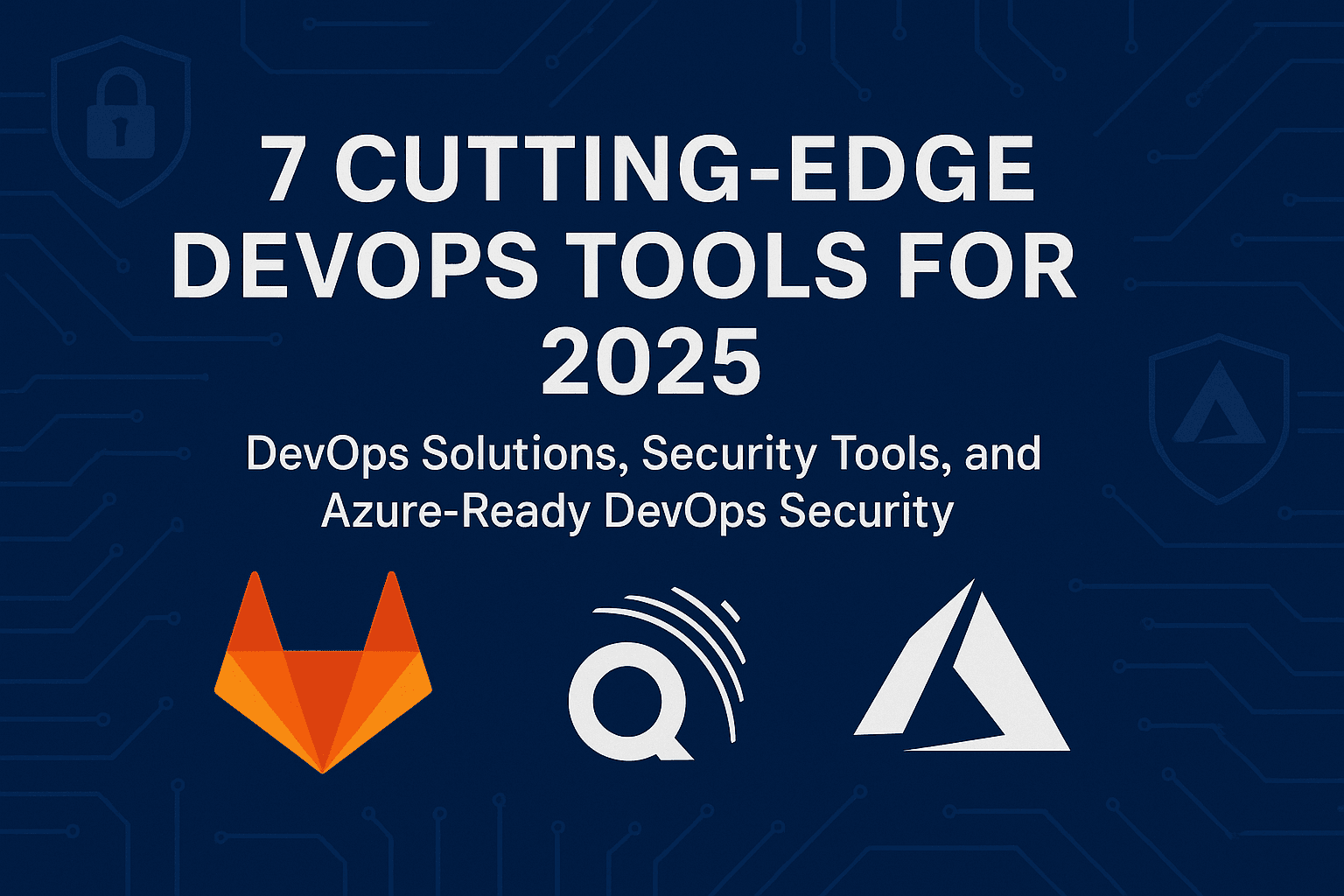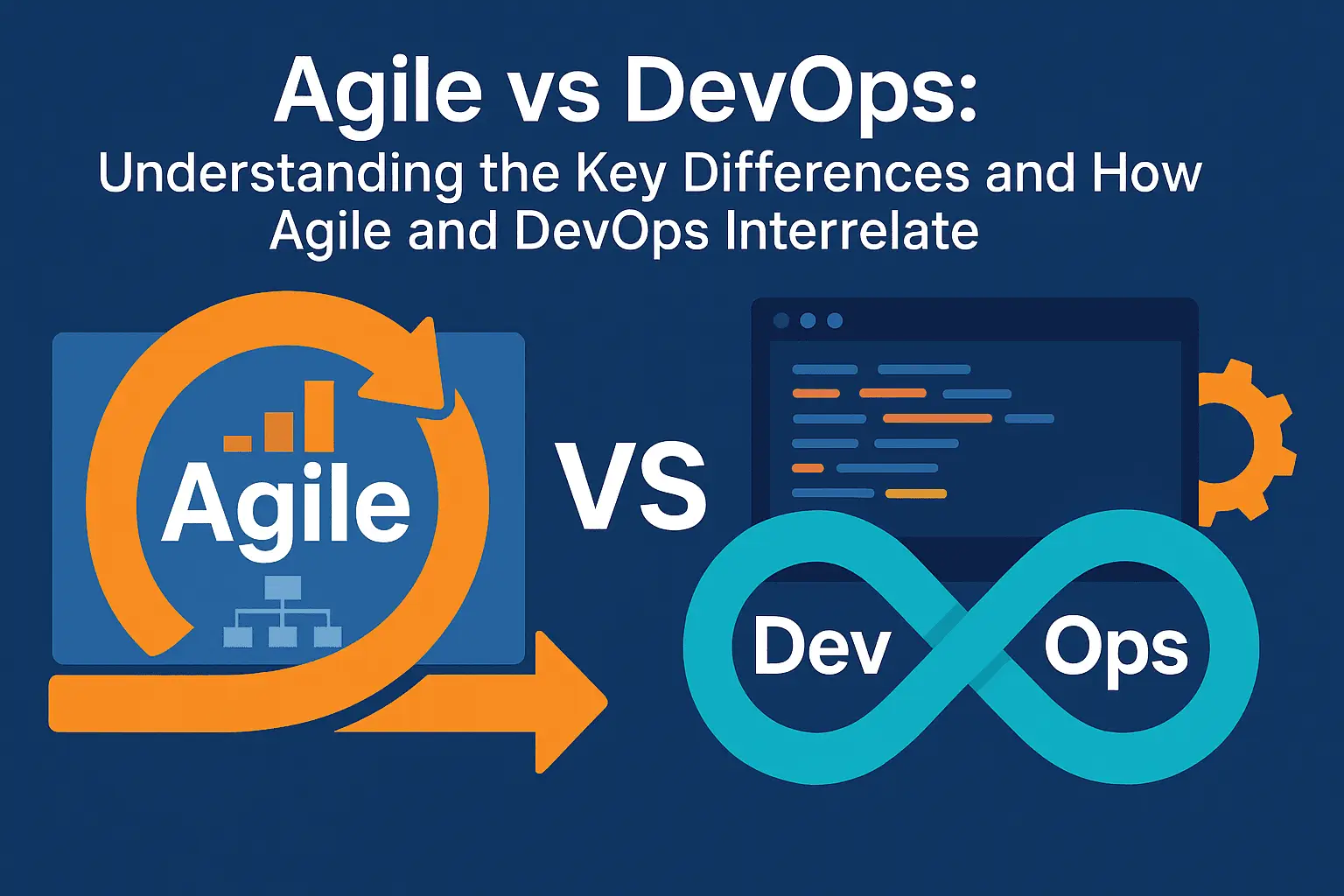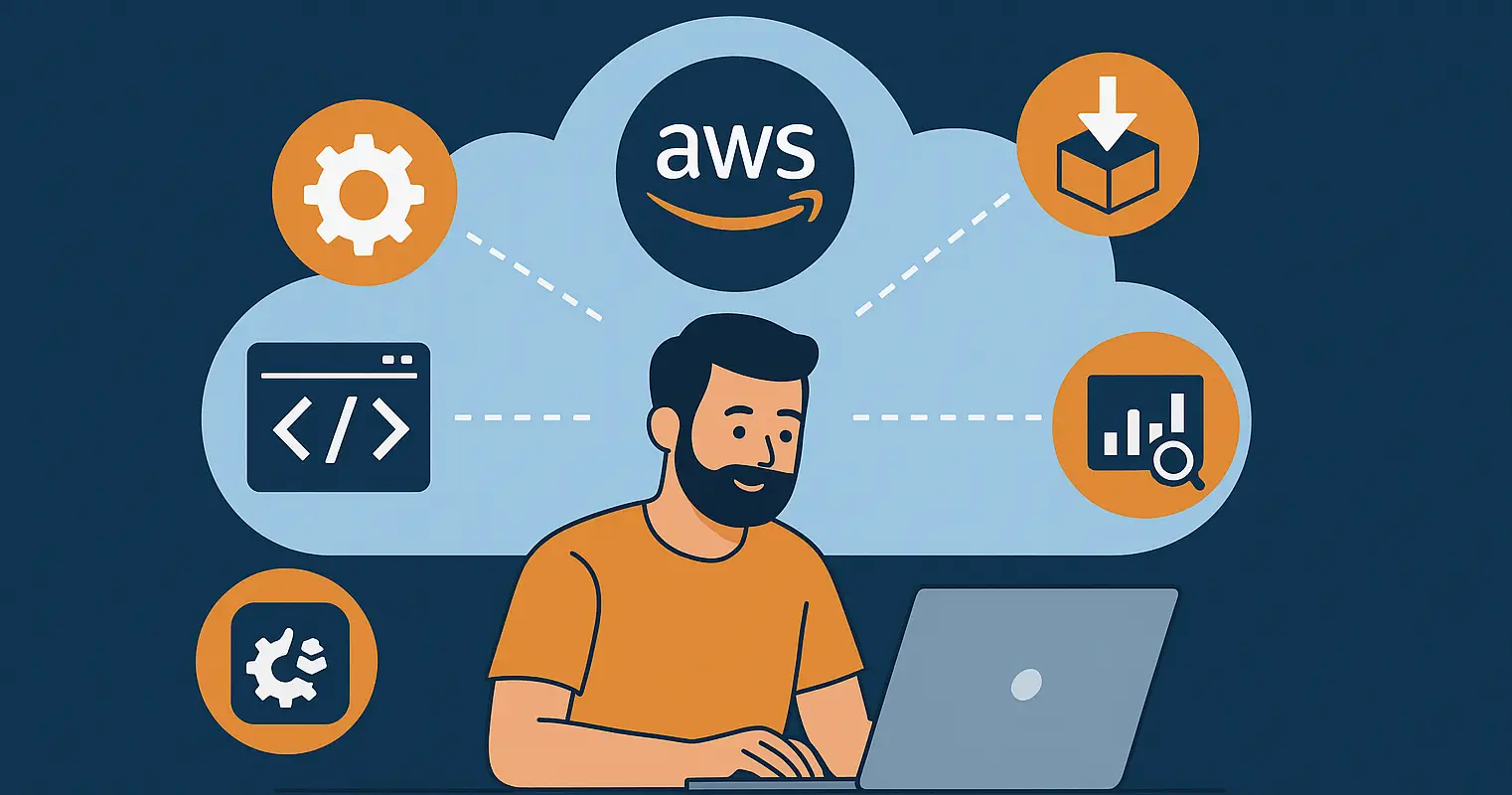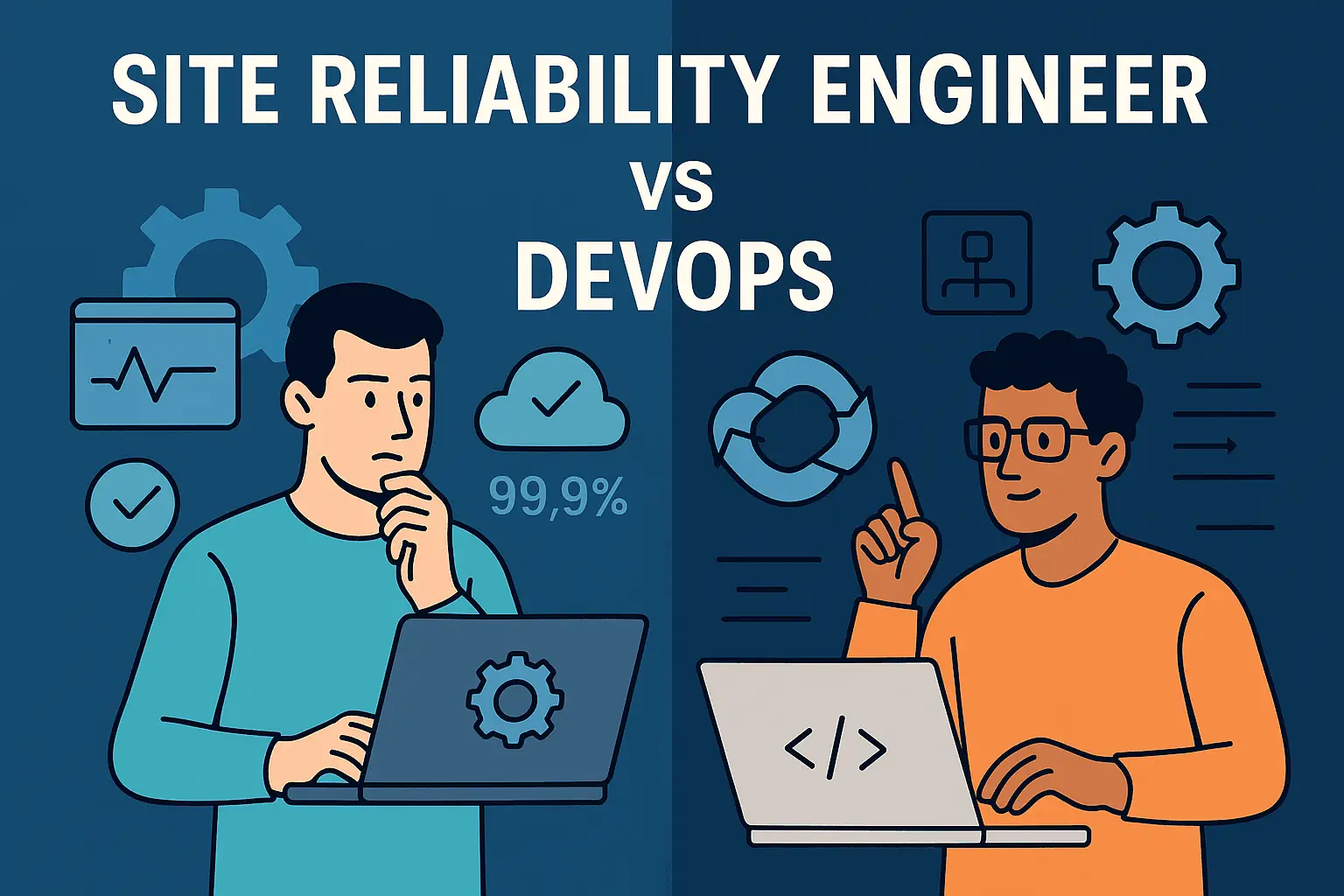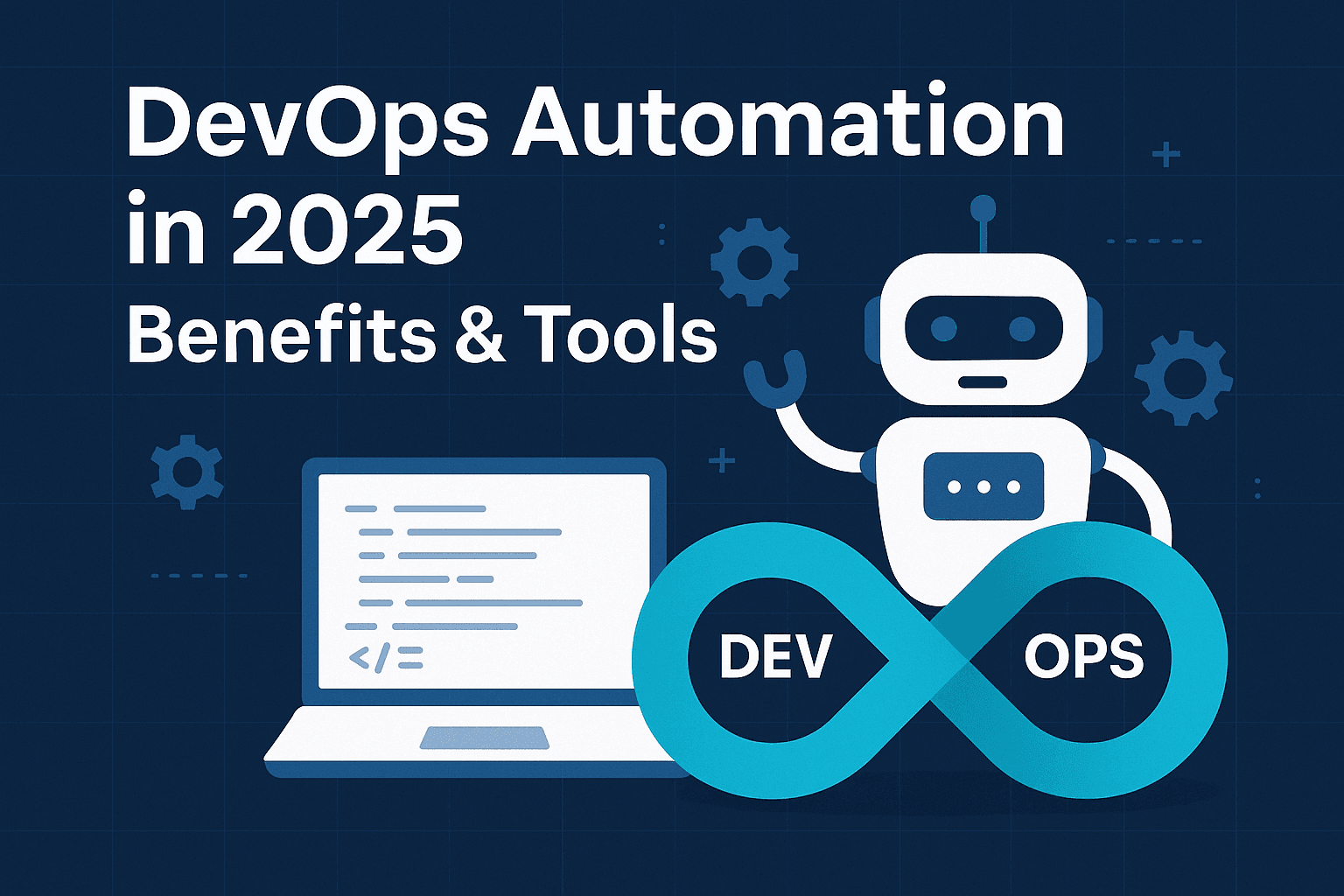Okay, let’s get on the same page first. Imagine you’re building a car. The “Dev” team designs and builds the awesome engine and sleek body. The “Ops” team is responsible for the factory that actually puts it together, ships it out, and keeps it running smoothly on the road.
In the old days? These teams often worked separately. Devs would throw the car design “over the wall” to Ops and say, “Good luck building this!” Chaos often ensued. Ops might say, “We can’t build this in our factory!” or “It keeps breaking down!”
DevOps is basically tearing down that wall. It’s about Devs and Ops working together from the very start. They share tools, automate boring stuff, and constantly talk to each other. The goal? Build better software, ship it faster, and keep it running reliably. Simple as that.
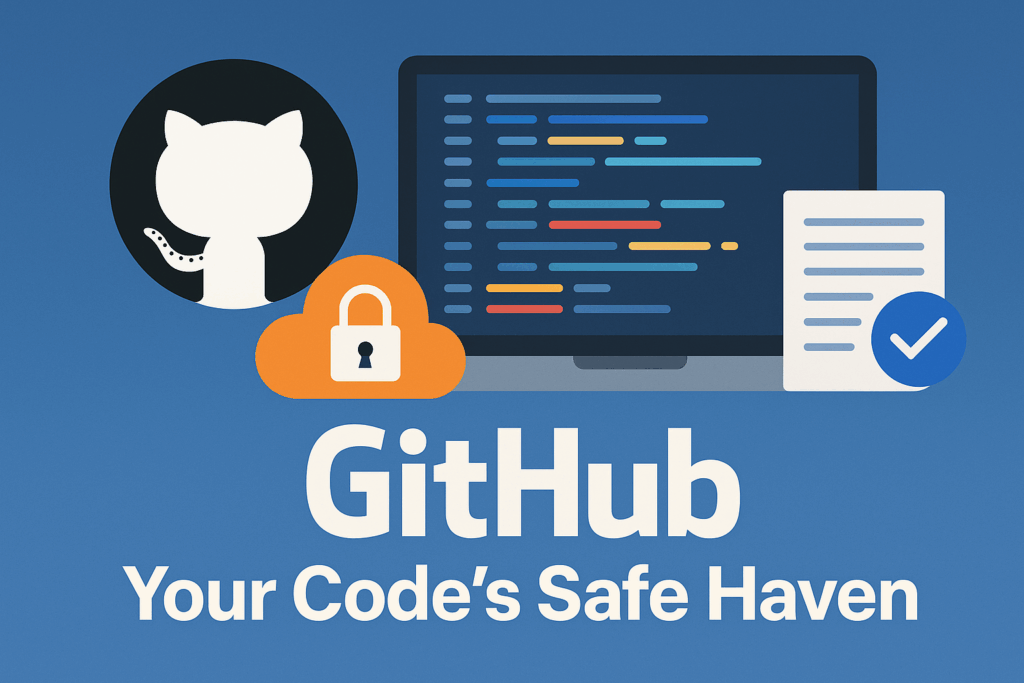
1. GitHub: Your Code's Safe Haven
Imagine working on a super important document with a bunch of people. Without version control? Nightmare. Someone saves over your changes, you can’t remember what changed yesterday, and chaos reigns.
That’s what coding was like before tools like GitHub.
- Why Version Control Systems Still Matter (More Than Ever!):
GitHub (and Git, the tech underneath it) is basically “Google Docs for code,” but way more powerful. It tracks every single change anyone makes. Broke something? You can easily see what changed and roll back. Need to work on a new feature without messing up the main code? Create a “branch” – a safe copy to experiment in. Done? Merge it back smoothly. In 2025, with teams spread out everywhere, this isn’t just nice; it’s essential. It’s the foundation everything else builds on. - Integrate GitHub into Your DevOps Toolchain:
Here’s the beauty: GitHub isn’t just a code locker anymore. It’s the central hub. Your CI/CD pipeline (like the ones we’ll talk about next) kicks off automatically when you push code to GitHub. Need a review? GitHub makes it easy for teammates to comment on your code changes. Found a bug?
Track it right there next to the code. It plugs into almost every other DevOps tool seamlessly. Think of it as Grand Central Station for your DevOps journey. You start and connect everything here.
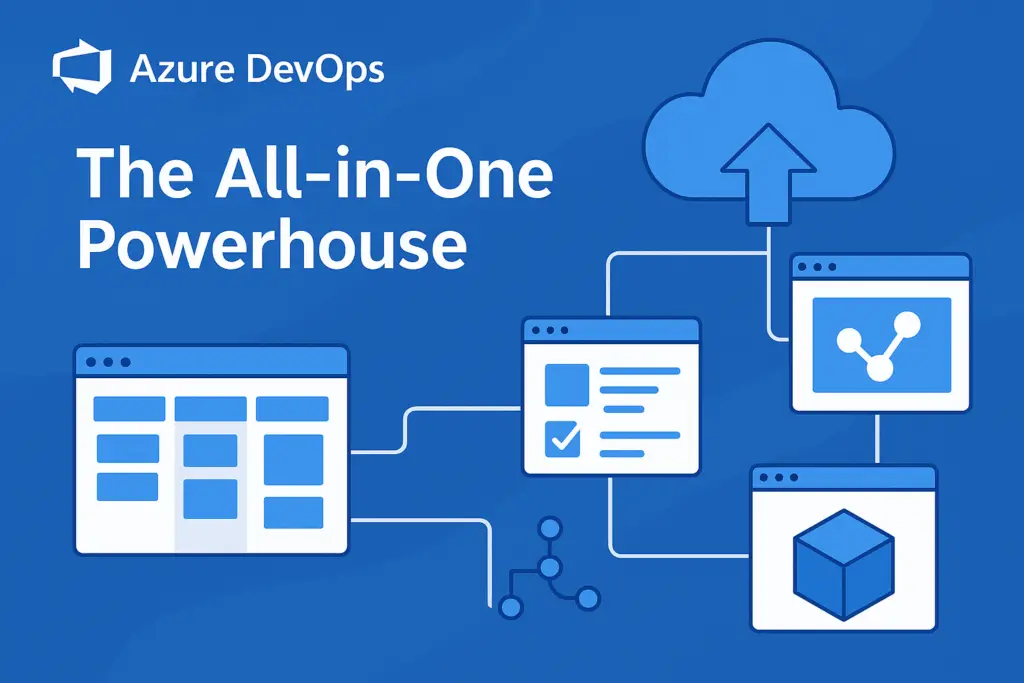
2. Azure DevOps: The All-in-One Powerhouse
Alright, moving on. Ever wish you had one place that handled everything from planning your work to building, acting as a testing tool, following best practices, and deploying your app?
Application Deployment and Continuous Delivery on Azure
If your apps live in Microsoft’s Azure cloud (or even if they don’t, mostly!), AzDO is a superstar. It gives you pipelines (that CI/CD magic!) specifically tuned for deploying to Azure services. Need to push an update to a web app? Spin up some virtual machines? Deploy a container?
AzDO pipelines make it smooth and automated. You define the steps once (“Build the code, run these tests, deploy to this server”), and then it just happens reliably every time you push new code. Less clicking, more shipping in real-time.
Leveraging Azure for Agile Software Development
But wait, there’s more! Azure DevOps isn’t just about deployment. It’s a whole suite:
- Boards: Plan your work, track tasks and bugs (like Trello or Jira, but built-in).
- Repos: Git repositories for your code (similar to GitHub, but private and integrated).
- Pipelines: The CI/CD engine (the star of the show!).
- Test Plans: Manage manual and automated testing.
- Artifacts: Store build outputs (like your compiled app) or shared code packages.If your team uses Agile methods (sprints, backlogs, etc.), AzDO gives you tools to manage that whole process alongside your code and deployments. It brings planning, coding, building, testing, and releasing together under one roof. Super convenient, especially if you’re already using other Microsoft stuff.
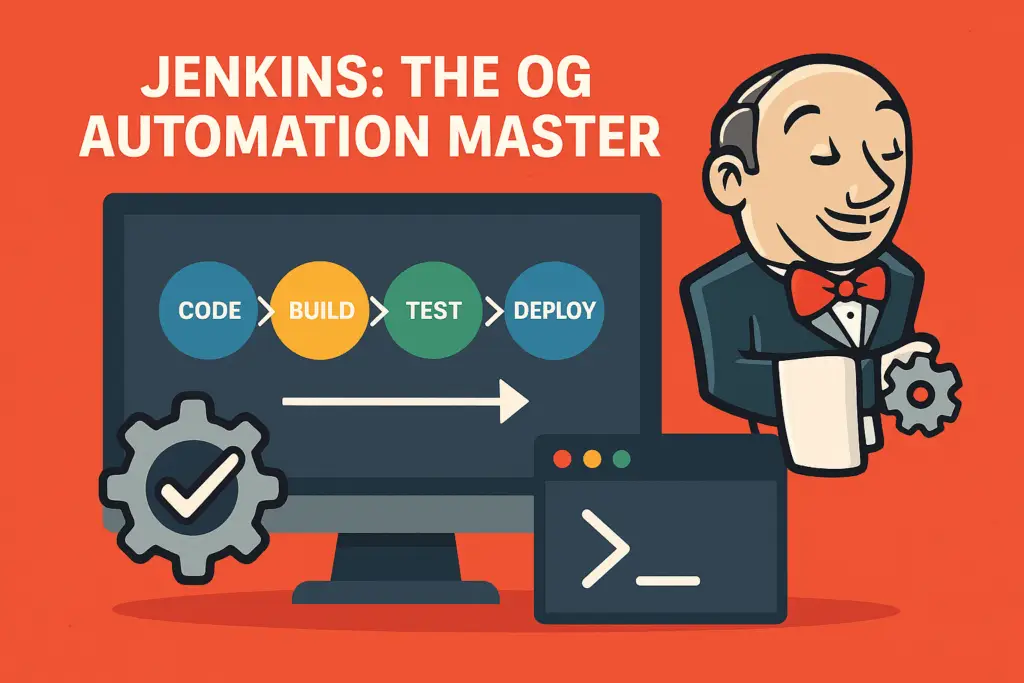
3. Jenkins: The OG Automation Master (Still Going Strong!)
Okay, let’s talk about an oldie but a goodie. Jenkins. Imagine a super reliable, incredibly flexible robot that can do almost any task you teach it. That’s Jenkins. It’s been around the block, and guess what? It’s still everywhere in 2025.
CI/CD Workflows to Streamline Deployment
Jenkins is the heart of CI/CD for countless teams. What does it do? Well, you tell it: “Hey Jenkins, whenever someone pushes code to this place, grab that code, build it, run these tests, and if everything passes, deploy it here.” It handles that entire workflow automatically. Its superpower is its massive library of plugins.
Need to build a Java app? There’s a plugin. Deploy to AWS? Plugin. Send a Slack notification if something fails? Plugin. Need to integrate with that weird legacy system? There’s probably a plugin, or you can write a script. This flexibility is why it survives.
How Jenkins Improves Code Quality and Developer Productivity
Think about it. Every single code change gets built and tested automatically. Immediately. If your change breaks the build, Jenkins screams (figuratively, via email or Slack) within minutes.
You know right away, fix it fast, and don’t let broken code pile up. This constant feedback loop means:
- Higher Quality: Bugs are caught super early when they’re cheap and easy to fix.
- Faster Development: Developers aren’t waiting hours or days to find out if their code works. They get instant feedback.
- Confident Deployments: By the time code makes it through the Jenkins pipeline, you know it’s been built and tested. Way less scary to push that “deploy” button.
Is it always the prettiest tool? Maybe not. But it’s a battle-tested workhorse that gets the job done, and that’s why it stays relevant.
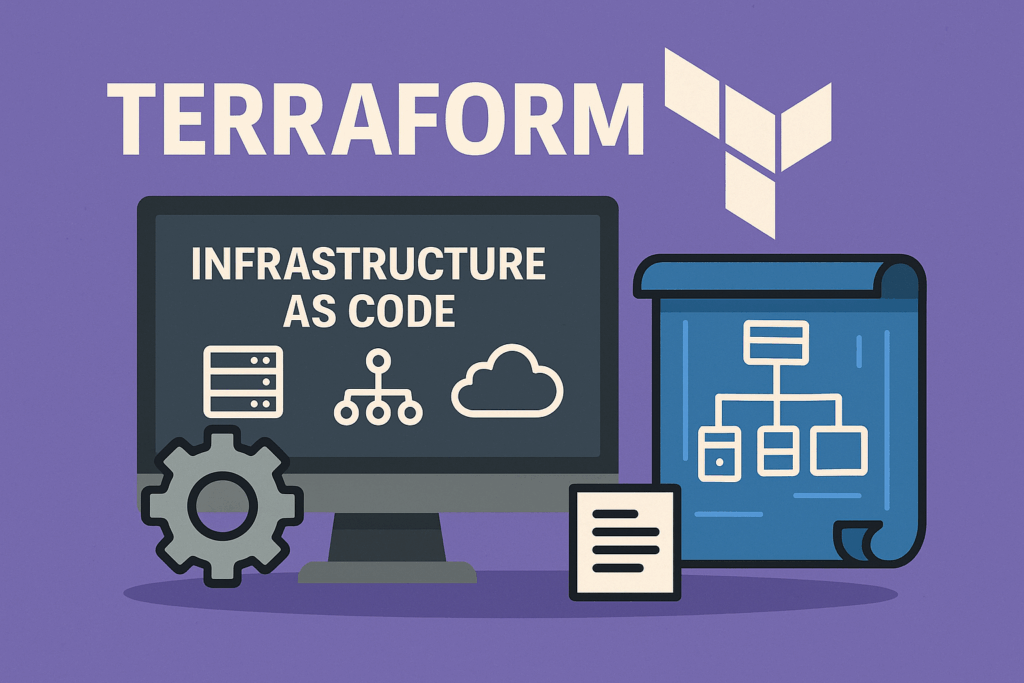
4. Terraform: Building Your Infrastructure Like Lego
Remember setting up servers manually? Logging into some cloud provider’s website, clicking a million buttons, configuring networks… ugh. Tedious, slow, and error-prone. What if you could just… write code to define exactly what servers, networks, and databases you need? That’s Terraform and the magic of Infrastructure as Code (IaC).
Automating Configuration Management with Terraform
Terraform lets you write configuration files (using a language called HCL – HashiCorp Configuration Language, it’s pretty readable) that describe your entire infrastructure setup. Need 3 web servers, a database, a load balancer, and a specific network setup? You write it down.
Then, you run terraform apply. Terraform talks to your cloud provider (AWS, Azure, GCP, even VMware) and makes it happen. Exactly. Every. Single. Time. Change the file? Run apply again, and Terraform figures out exactly what needs to be updated, added, or destroyed. It’s like having a perfect, never-forgetful sysadmin.
Secure and Scalable DevOps Practices with IaC
Why is this still huge in 2025?
- Consistency: No more “works on Jeff’s machine” for infrastructure. If the code says it, that’s what gets built. Every. Time.
- Speed: Spin up an entire environment in minutes, not days.
- Version Control: Your infrastructure code lives in Git (like your app code!). You can track changes, see who did what, roll back if needed. This is HUGE for security and audit trails.
- Scalability: Need more servers? Change a number in your Terraform file and run apply. Done. Scaling down? Same thing.
- Disaster Recovery: Your infrastructure setup is defined in code. If everything blows up, you can rebuild it exactly the same way quickly from your code. Peace of mind.
Terraform turns infrastructure from a manual chore into a repeatable, codified process. It’s fundamental for modern, reliable, and secure DevOps.
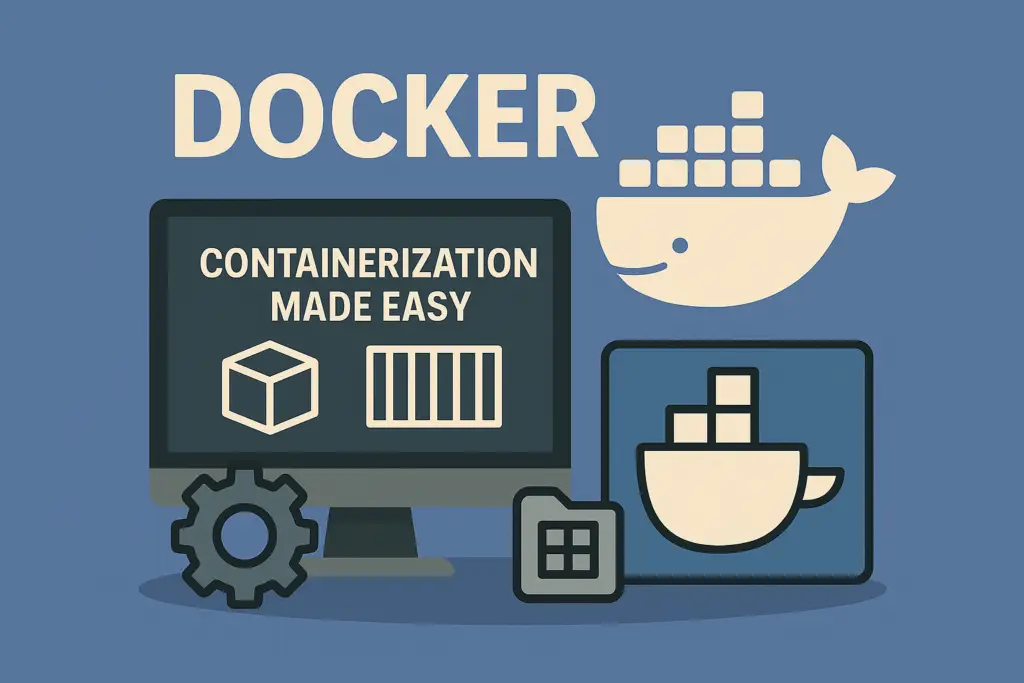
5. Docker: The Box That Changed Everything
Okay, picture this classic problem: Your app runs perfectly on your laptop. You give it to the operations team to run on the server. It breaks. Why? “Well, it worked on my machine!” Sound familiar?
Different operating systems, different library versions, different configurations… a total mess. Enter Docker.
Simplifying Application Deployment Across Environments
Docker packages your application and everything it needs to run (code, runtime, system tools, libraries, settings) into a single, lightweight unit called a container. Think of it like a standardized shipping container for software.
This container runs exactly the same way anywhere you have Docker installed – your laptop, a test server, a production server in the cloud. No more “it works on my machine” headaches! You build the container once, and you can run it consistently everywhere. This is a massive win for DevOps.
Integrate Docker with Your DevOps Toolchain
Docker fits beautifully into the CI/CD pipeline we keep talking about:
- Build: Your pipeline (Jenkins, GitLab CI, GitHub Actions, Azure Pipelines) builds your application into a Docker image.
- Test: It can run tests inside a container based on that image, ensuring the environment is consistent.
- Deploy: The pipeline pushes the tested image to a registry (like Docker Hub or Azure Container Registry). Then, it tells your production servers (running Docker or Kubernetes) to pull down the new image and run it. Boom. Consistent, reliable deployment.
Containers start super fast and use fewer resources than traditional virtual machines. Docker made containers easy and popular, and it remains the go-to tool for building and running them in 2025, even as orchestration tools (like Kubernetes, which often manages Docker containers) have evolved around it.
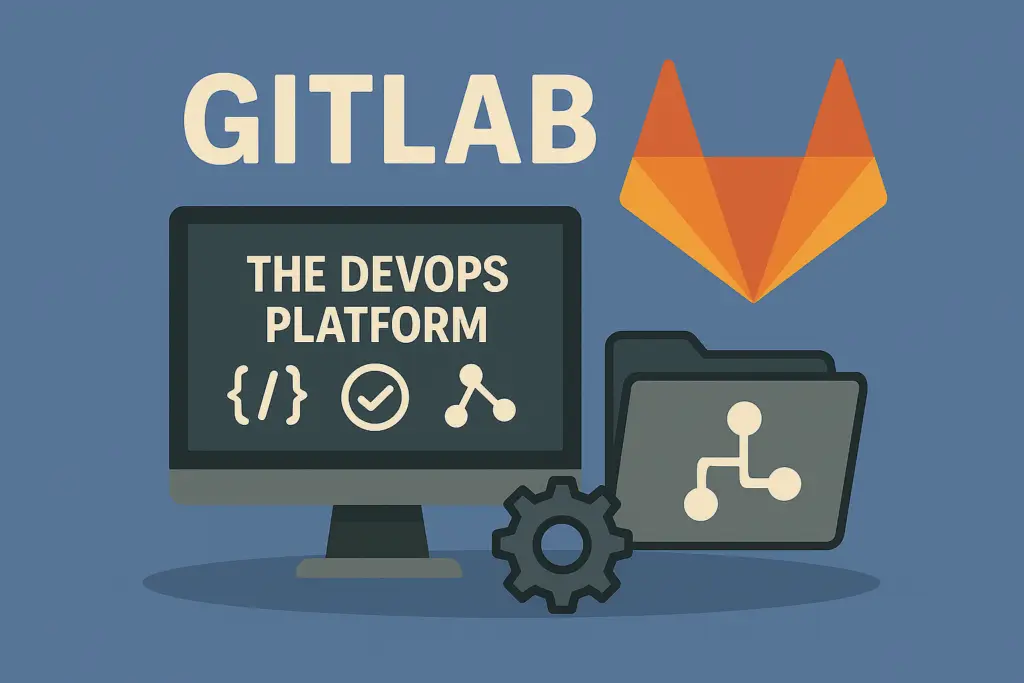
6. GitLab: One Stop DevOps Shop (More Than Just Git!)
Remember GitHub? GitLab started similarly – it’s also a Git repository manager (like a place to store your code with version control). But GitLab had bigger ambitions. It wanted to be the entire DevOps lifecycle in one single application. And in 2025, it’s seriously delivering on that promise.
Version Control, CI/CD, and Security in One DevOps Tool
GitLab isn’t just code hosting. It bundles together:
- Git Repositories: Solid version control (obviously).
- CI/CD Pipelines (GitLab CI/CD): Built right in! You define your build, test, deploy stages in a file within your repo. Super integrated.
- Issue Tracking: Plan features, track bugs.
- Container Registry: Store your Docker images.
- Security Scanning: Automatically check your code for vulnerabilities as you write it or in your containers. This “shift-left” security is crucial.
- Kubernetes Integration: Manage your container clusters.
Monitoring
See how your app is performing post-deployment.
Having it all in one place is incredibly powerful. No context switching between ten different tools. Your code, your pipeline, your issues, your security findings – they’re all tightly linked right there in GitLab.
Workflow Optimization with GitLab’s DevOps Capabilities:
This integration creates a super smooth workflow.
A developer pushes code to a GitLab repo branch. GitLab CI/CD automatically kicks off: builds the code, runs tests, scans for security issues, maybe even deploys to a staging environment.
If tests or scans fail, the developer gets notified instantly right next to their code change.
- They create a Merge Request (like a Pull Request in GitHub) to get their changes into the main code.
- Teammates review the code and can see the pipeline results and security scans right there in the Merge Request.
Once approved and merged, the pipeline can automatically deploy to production.
It reduces friction, speeds things up, and gives everyone visibility. If you want an integrated experience without juggling multiple vendors, GitLab is a top contender in 2025.

7. SonarQube: Your Code's Personal Trainer (For Quality & Security!)
You’ve got your code flying through pipelines, deploying smoothly… but is it good code? Is it secure?
Is it a tangled mess that will be a nightmare to change next month? That’s where SonarQube shines. Think of it as a super-smart, automated code reviewer that never sleeps.
DevOps Security and Compliance through Static Code Analysis
SonarQube performs Static Application Security Testing (SAST). This means it analyzes your source code without even running it, looking for potential problems:
- Bugs: Logical errors, potential crashes, resource leaks (like forgetting to close a file).
- Vulnerabilities: Security holes that hackers could exploit (like SQL injection risks, cross-site scripting).
- Code Smells: Messy, hard-to-maintain code (overly complex functions, duplicated code, dead code).
- Compliance: Checks against coding standards (like MISRA, OWASP) that your industry might require.
The key for DevOps? It plugs right into your CI/CD pipeline. Every time code is pushed or built, SonarQube automatically scans it. If it finds critical bugs or security vulnerabilities, it can fail the build. This forces developers to fix serious issues immediately, before they even get close to production. This “shift-left” approach to quality and security is non-negotiable in 2025.
Security Tools That Support Agile and DevOps Development
Why is this still vital? Because speed can’t come at the cost of security or stability. SonarQube provides:
- Fast Feedback: Developers see quality and security issues as they code or immediately after pushing.
- Objective Measurement: It gives you a “quality gate” – a pass/fail based on rules you set (e.g., “Zero critical bugs, security vulnerabilities below X”).
- Trends Over Time: See if your code quality is improving or getting worse.
- Team Visibility: Everyone sees the same standards and issues. It helps teams learn and write better code together. SonarQube keeps your code clean, secure, and maintainable as you move fast. It’s the essential quality and security gu
Choosing the Right Tools and Services for Your DevOps Strategy (No One-Size-Fits-All!)
Phew! That was a lot of tools. You might be thinking, “Do I need ALL of these?” Absolutely not! Trying to use everything at once is a recipe for burnout and confusion. Choosing tools is like building your own superhero utility belt – you pick what works best for your mission and your team.
Building a Robust DevOps Toolchain in 2025
Think about:
- Where’s Your Code? Mostly on GitHub? Then GitHub Actions might be a natural fit. Using Azure heavily? Azure DevOps integrates seamlessly. Want an all-in-one? GitLab is compelling.
- What’s Your Tech Stack? Building Java apps? Jenkins has deep history there. Mostly containers? Docker and Kubernetes tooling is key. Heavy cloud use? Terraform is almost essential.
- Team Size & Skills: Small, nimble team? Simpler solutions or integrated platforms (GitLab, GitHub) might be easier. Large, complex needs? Maybe the flexibility of Jenkins plus specialized tools makes sense.
- Your Biggest Pain Points: Are deployments slow and error-prone? Focus on CI/CD (Jenkins, GitLab CI, GitHub Actions, Azure Pipelines). Is infrastructure a mess? Prioritize Terraform. Worried about code quality? Get SonarQube in the pipeline. Security keeping you up? GitLab/GitHub built-in scans plus SonarQube are vital.
- Budget: Some tools are open-source (Jenkins, Terraform, Docker Engine, SonarQube Community). Others have free tiers but paid features (GitHub, GitLab, Azure DevOps). Cloud costs (for running pipelines, hosting) add up, too.
Integrate DevOps Tools Seamlessly into Your Workflow
The magic isn’t just the tools; it’s how they talk to each other, which is why continuous integration is the key.
This is where APIs and plugins come in. Your core flow might look like:
- Code: Git (GitHub/GitLab) -> Triggers…
- Build/Test: CI/CD Tool (Jenkins, GitLab CI, GitHub Actions, Azure Pipelines) -> Uses Docker to build/test -> Scans with SonarQube -> Stores artifacts.
- Infrastructure: Terraform defines/provisions the servers.
- Deploy: CI/CD Tool deploys the built artifact (or Docker container) to the Terraform-provisioned infrastructure.
- Monitor: Tools watch the running app (not covered here, but crucial!).
Start small. Pick one pain point, choose a tool to fix it, get it working, and then connect it to the next piece. Trying to boil the ocean on day one leads to drowning.
Final Thoughts: The Future is Bright
So, here we are in 2025. DevOps isn’t a fad; it’s just how modern software gets built and delivered. The core principles – collaboration, automation, and continuous improvement – are more important than ever. The tools we talked about? They’ve proven their worth by adapting and staying essential parts of the puzzle.

